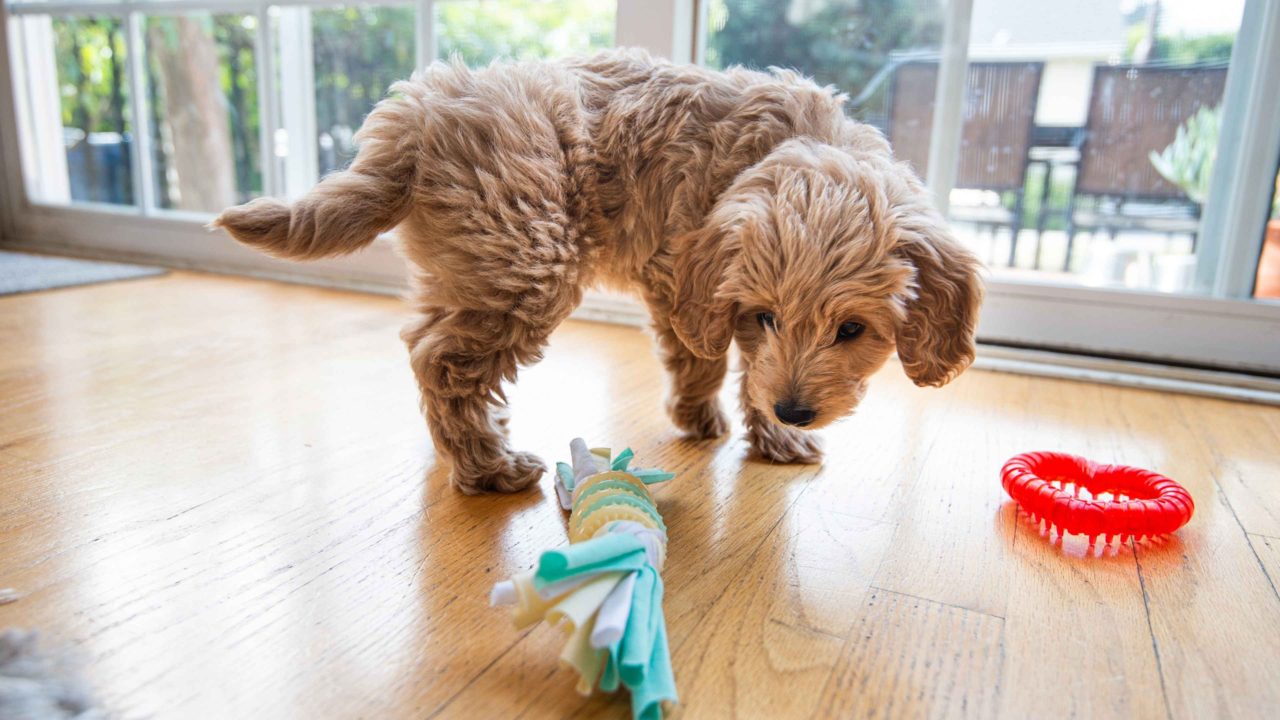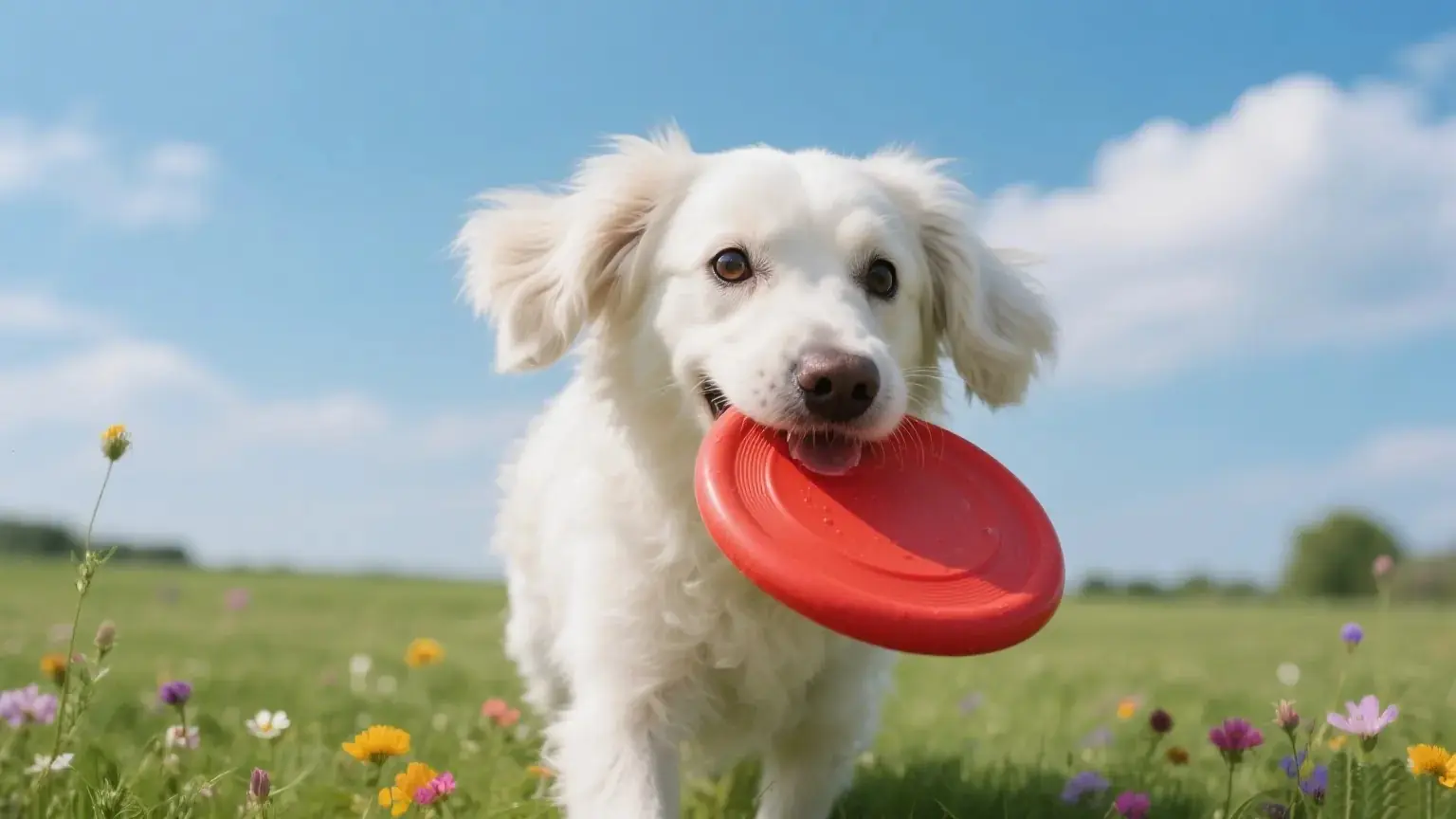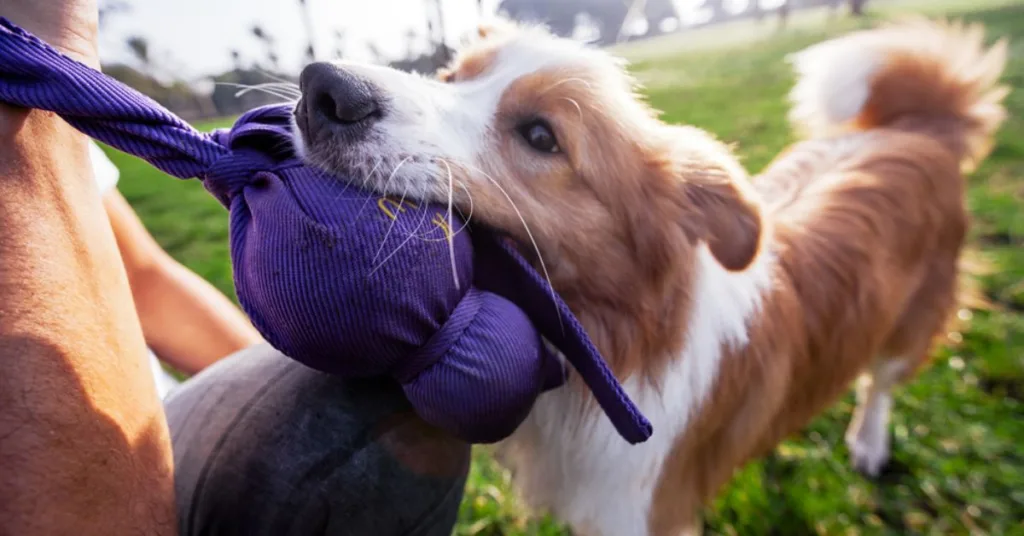New
Playtime Matters: Why Toys Are Crucial for Pet Development
1. The Psychological and Emotional Role of Toys
Play is not a frivolous activity for pets; it is an essential part of mental development, emotional balance, and behavioral health. Toys act as instruments of stimulation, offering animals opportunities to explore, challenge their intellect, and express instinctual behaviors in safe, constructive ways.

Stimulation of Natural Instincts
Cats are born hunters, designed to stalk, pounce, and capture prey. Dogs, depending on breed, may have herding, retrieving, or guarding instincts. Without proper outlets, these instincts manifest as destructive chewing, aggression, or compulsive behaviors. Toys bridge the gap between instinct and modern domestic life. A feather wand allows a cat to simulate hunting, while a fetch ball gives a retriever purpose. These activities fulfill evolutionary needs while preventing frustration.
Emotional Regulation Through Play
Engaging with toys provides animals with stress relief, much like meditation or exercise for humans. Interactive puzzles or chew toys allow pets to self-soothe, reducing anxiety when left alone. For shelter animals, toys often make the difference between restlessness and calmness, improving adoptability. Playtime is not just entertainment—it’s therapy.
Preventing Behavioral Problems
Bored pets often develop undesirable behaviors: excessive barking, scratching furniture, or obsessive licking. Toys channel excess energy into positive activities, curbing the likelihood of destructive tendencies. This prevents conflicts within households, strengthens bonds, and creates a more harmonious living environment.
Social Connection and Bonding
Toys also function as tools of communication between humans and pets. Tug-of-war ropes, interactive laser pointers, or frisbees transform guardians into play partners, reinforcing trust and companionship. Shared play builds loyalty, teaching pets that humans are not only caregivers but also allies in joy.
2. Physical Benefits and Developmental Growth
Beyond mental enrichment, toys contribute directly to physical health. The body and mind are deeply intertwined, and regular play maintains a pet’s vitality from kittenhood or puppyhood to senior years.
Muscle Development and Coordination
For young pets, toys are essential for developing motor skills. Puppies chasing rolling balls strengthen their leg muscles while improving coordination. Kittens leaping for dangling toys refine balance and agility. These early experiences lay the groundwork for lifelong strength and mobility.
Weight Management and Obesity Prevention
Pet obesity is a global issue, linked to diabetes, heart disease, and reduced lifespan. Toys provide exercise disguised as fun, making it easier for guardians to encourage activity. A dog playing fetch burns calories naturally, while a cat chasing a laser pointer gets essential cardio. Unlike forced exercise, toy-based play is voluntary, increasing engagement and enjoyment.
Dental and Oral Health Benefits
Chew toys serve dual functions: entertainment and dental care. As pets gnaw, plaque and tartar are naturally reduced, lowering the risk of periodontal disease. For teething puppies, safe chew toys alleviate discomfort while preventing them from targeting inappropriate items like shoes or furniture.
Longevity and Healthy Aging
Senior pets often face declining mobility and reduced cognitive function. Toys adapted for older animals—soft chew items, slow-paced puzzles, or gentle fetch activities—keep joints flexible and minds engaged. Studies show that consistent play in older pets delays cognitive decline, much like puzzles and reading do for humans.
3. Varieties of Toys and Their Unique Contributions

The diversity of pet toys available today reflects the multifaceted needs of animals. Each category offers specific benefits, and combining them ensures a balanced developmental environment.
Interactive Puzzles and Food-Dispensing Toys
These toys challenge pets mentally, requiring problem-solving skills to access hidden treats. They promote patience, reduce boredom, and encourage slower eating habits, which prevent digestive issues. For high-energy breeds, puzzles can provide much-needed mental exhaustion even indoors.
Chew Toys and Dental Aids
Designed for durability, chew toys satisfy the natural urge to gnaw while preserving furniture and shoes. Materials like rubber, nylon, or rawhide substitutes provide resistance while being safe for teeth. For heavy chewers, sturdy toys also reduce anxiety and frustration.
Fetch and Retrieval Toys
Balls, frisbees, and stick-like toys engage pets in running and retrieving, perfect for active breeds. These toys foster endurance, agility, and reflexes while deepening the bond between pet and guardian through shared outdoor activity.
Plush Toys and Comfort Items
Beyond stimulation, some toys serve emotional roles. Many pets form attachments to soft toys, carrying them around like security blankets. This is particularly common in dogs with strong maternal instincts or cats that enjoy kneading. Comfort toys help reduce loneliness, especially for pets left alone for extended periods.
Sensory-Enriching Toys
Toys that squeak, crinkle, or move unpredictably keep pets intrigued, stimulating auditory and tactile senses. Cats are particularly drawn to toys with feathers or bells, while dogs respond to squeaky noises that mimic prey sounds. Sensory toys prevent monotony by constantly renewing curiosity.
Modern Technological Toys
Advancements in pet care have introduced smart toys—automated ball throwers, robotic mice, or app-controlled devices. These provide engagement even when guardians are busy, ensuring pets receive stimulation throughout the day. However, technology should complement, not replace, direct human interaction.
Toys as Foundations of Thriving Lives
Toys are not luxuries but fundamental tools for raising healthy, balanced, and happy pets. They nurture instincts, strengthen muscles, protect oral health, prevent obesity, alleviate stress, and build stronger human-animal bonds. Just as education and recreation are indispensable for children, play and toys are indispensable for pets.
For guardians, the responsibility extends beyond feeding and sheltering. Providing appropriate toys, rotating them regularly to maintain novelty, and engaging directly in play represent investments in a pet’s quality of life. Ultimately, toys create an environment where pets not only live but thrive—expressing their true nature in joy, strength, and companionship.
4. Cognitive Growth and Neurological Stimulation
Play serves as a gymnasium for the brain. When animals interact with toys, neurons fire, new pathways form, and memory retention improves. Just as puzzles sharpen human intelligence, engaging activities expand mental capacity in pets.
Neuroplasticity Through Play
Studies in veterinary behavior science reveal that structured play enhances neuroplasticity—the brain’s ability to form new connections. For example, dogs working with problem-solving feeders display stronger adaptability and learning speed. Kittens exposed to varied toys early in life develop superior spatial awareness and faster reflexes compared to those with limited exposure.
Critical Developmental Windows
Young pets have critical windows of neurological development. During these stages, play shapes personality, confidence, and coping mechanisms. For instance, puppies deprived of play before 12 weeks may struggle with impulse control, while kittens without interactive experiences may become timid or overly reactive. Toys act as training tools that sculpt the nervous system during these pivotal months.
Memory and Retention
Puzzle-based toys requiring repetitive engagement improve long-term memory. Dogs remembering sequences in treat-dispensing games demonstrate enhanced recall abilities. Similarly, cats accustomed to tracking laser patterns sharpen their focus and persistence, which later assists in problem-solving and learning commands.
5. Species-Specific Differences: Dogs vs. Cats
While both species benefit from play, their evolutionary paths have shaped distinct preferences and requirements. Recognizing these differences ensures that guardians select toys tailored to their companion’s biology.
Canine Preferences
Dogs, descendants of pack hunters, thrive on cooperative activities. Toys that mimic group dynamics—such as tug ropes or fetch items—satisfy their innate drive to work alongside others. Breeds bred for specific tasks (retrievers, herders, scent hounds) often require toys that replicate their historical functions. A border collie may excel with agility obstacles, while a beagle enjoys scent-tracking games.
Feline Play Patterns
Cats are solitary hunters, preferring ambush-based play. Toys simulating prey—mice replicas, feather teasers, or erratic moving objects—trigger their natural stalking instincts. Unlike dogs, cats favor shorter but more frequent play sessions. Overexertion can lead to stress, so toys that allow bursts of energy followed by rest are ideal.
Cross-Species Misconceptions
A common mistake is assuming dogs and cats enjoy identical play. While some overlap exists (balls, soft plush items), mismatched toys can frustrate or even endanger pets. A ball launcher suited for a Labrador may terrify a kitten. Understanding species-specific needs ensures enrichment is positive rather than overwhelming.
6. The Social and Environmental Dimension
Play is not isolated to individual enrichment—it shapes community dynamics within households and beyond.
Multi-Pet Households
In homes with multiple animals, toys prevent conflict by channeling energy constructively. Interactive items reduce rivalry by providing shared focus. However, resource guarding can arise if toys are limited. Rotating and diversifying items ensures equitable access and minimizes tension.
Human-Animal Interaction
Toys act as cultural bridges between humans and animals. A frisbee toss is not merely a game; it is an act of communication, teaching dogs to interpret human gestures while humans learn to read canine body language. Cats chasing laser dots similarly express trust by exposing their hunting drives in front of their guardians.
Environmental Enrichment in Shelters
In rescue centers, toys are lifelines. They reduce stress hormones, prevent depression, and increase adoptability. A dog seen joyfully playing with a squeaky toy appeals more to potential adopters than one displaying stress-induced pacing. Likewise, cats interacting with feather wands appear more approachable and confident.
7. Technological Advancements and Innovative Trends
The toy industry for pets has evolved dramatically, integrating science, design, and technology.
Smart Toys
Robotic companions, motion-activated lasers, and app-controlled treat dispensers offer stimulation even when guardians are absent. These devices keep animals engaged for hours, reducing loneliness and separation anxiety.
Sustainable Materials
Modern consumers demand eco-friendly options. Biodegradable chew toys, recycled-fabric plushies, and organic catnip products align with both environmental ethics and pet safety. Sustainability ensures enrichment without ecological compromise.
Customization and Personalization
3D printing now allows bespoke toy design tailored to breed, size, and preference. Guardians can order fetch balls calibrated to jaw strength or puzzle feeders adjusted to cognitive levels. This trend reflects a shift toward individualized care.
Virtual Reality and Augmented Play
Experimental technologies explore augmented reality games for pets, projecting moving shapes on walls or floors. While still in early stages, these innovations hint at future play landscapes where pets engage with digital environments safely indoors.
8. Guardian Roles and Responsibilities
Toys, though essential, require human oversight. Guardians play a decisive role in ensuring safe and beneficial engagement.
Toy Rotation
Animals, like humans, experience novelty fatigue. A toy ignored today may regain appeal weeks later if reintroduced. Rotating toys maintains excitement, preventing stagnation and ensuring continuous stimulation.
Supervision and Safety
Not all toys are risk-free. Frayed ropes, broken squeakers, or swallowed small parts can endanger pets. Regular inspection and supervision during play prevent accidents. Guardians must also match toy size to the animal’s mouth to avoid choking hazards.
Balancing Play and Rest
Excessive stimulation can overwhelm pets, leading to hyperactivity or exhaustion. Guardians must recognize signals of fatigue—panting, loss of focus, retreat—and allow rest. Structured play balanced with downtime ensures holistic well-being.
Financial and Emotional Investment
While some may view toys as optional luxuries, true guardians recognize them as necessities akin to food and shelter. Investing in quality toys pays dividends in reduced veterinary bills, fewer behavioral problems, and deeper emotional bonds.
9. Scientific Evidence and Case Studies
Research provides compelling evidence for the transformative role of play in pet health.
Canine Research
A study published in Applied Animal Behaviour Science found that dogs provided with interactive toys exhibited reduced cortisol (stress hormone) levels compared to those without enrichment. Another investigation showed agility-based play improved cardiovascular endurance and coordination in working breeds.
Feline Studies
Cats in enriched environments demonstrated fewer stress behaviors such as over-grooming and hiding. Access to toys was correlated with higher activity levels and better weight management, especially in indoor-only cats.
Shelter Case Studies
Shelters implementing structured play programs reported higher adoption rates. Dogs that played fetch during adoption events were 70% more likely to find homes, while cats interacting with toys had increased visitor engagement.
10. Broader Implications for Human Society
The significance of pet toys extends beyond individual households, influencing societal perspectives on animal welfare.
Urban Living Adaptations
In cities where outdoor access is limited, toys substitute for natural exploration. Interactive feeders, climbing structures, and indoor fetch alternatives allow pets to thrive despite constrained environments. This adaptation is crucial as urban pet ownership continues to rise.
Educational Opportunities
Children who grow up engaging with pets through toys learn responsibility, empathy, and patience. Shared play fosters compassion, teaching children to respect animal needs while strengthening family bonds.
Economic and Cultural Impact
The pet toy industry represents a multibillion-dollar market, reflecting cultural acknowledgment of pets as family members. This growth has sparked innovation, job creation, and even fashion crossovers, where toy designs mirror human trends.
A Lifelong Commitment to Enrichment
Play, facilitated through thoughtfully chosen toys, is not an optional indulgence but a cornerstone of responsible guardianship. From shaping neurological development to sustaining physical health, from alleviating stress to fostering interspecies bonds, toys hold transformative power.
Guardians who recognize this responsibility invest not only in products but in futures—ensuring that their companions live enriched, joyful, and fulfilled lives. As science and technology continue to advance, the possibilities for innovation in pet play expand, but the core principle remains timeless: play is love in action.
11. Evolutionary Roots of Play
From Wild Ancestors to Domestic Companions
Long before pets shared couches and gardens with humans, their wild ancestors engaged in forms of play. Wolf cubs practiced mock hunting, chasing each other and pouncing on twigs to sharpen survival skills. Wild felines swatted at insects or stalked moving shadows, refining stealth and reaction speed. These primal activities were not frivolous but essential rehearsals for real-world challenges. Domestic animals have inherited this instinct, and toys act as modern substitutes for the lessons once learned in wilderness.
Play as a Survival Mechanism
Ethologists argue that play enhances adaptability. By rehearsing unpredictable scenarios in safe contexts, young animals develop resilience. For example, mock fights among puppies teach bite inhibition, social ranking, and conflict resolution. Without these playful rehearsals, dogs may struggle with impulse control or exhibit aggression in adulthood. Toys extend these opportunities into domestic settings, providing practice arenas without real danger.
Cultural Evolution with Humans
As domestication progressed, humans began shaping play experiences. Early societies crafted rudimentary objects—bones, sticks, or leather scraps—that doubled as toys. Over centuries, these evolved into sophisticated designs tailored to both entertainment and training. Today’s wide array of products reflects this co-evolution of human creativity and animal instinct.
12. Mental Health Benefits Beyond Fun
Stress Reduction and Anxiety Control
Modern pets often live in confined spaces, exposed to stressors like noise, loneliness, or inconsistent schedules. Toys act as therapeutic outlets, redirecting nervous energy. A chewing session on a durable toy can lower cortisol levels, functioning much like stress balls for humans. For cats, batting a dangling string reduces tension caused by environmental changes such as moving homes.
Preventing Behavioral Disorders
Boredom is a leading cause of destructive habits—chewing furniture, scratching carpets, or excessive barking. Structured play with appropriate toys alleviates restlessness, decreasing the likelihood of household damage and behavioral complaints. Dogs left alone with interactive puzzles demonstrate calmer temperaments, while cats with climbing structures show fewer signs of frustration-driven aggression.
Enhancing Emotional Stability
Consistent play routines foster predictability, which is crucial for animals prone to anxiety. Knowing that each evening brings tug-of-war or feather games reassures pets, grounding them in stable rhythms. Emotional balance established through these rituals spills over into other aspects of life, making veterinary visits or training sessions smoother.
13. Interconnection of Play, Nutrition, and Rest
Appetite Regulation
Active play stimulates metabolism, encouraging healthy appetite cycles. A dog that spends twenty minutes chasing a ball not only burns calories but also experiences improved digestion. Puzzle feeders merge nutrition with mental stimulation, ensuring slow, mindful eating that reduces bloating risks.
Weight Management
Obesity is a rising concern among companion animals. Toys that require physical effort—treat-dispensing balls, climbing towers, or chasing wands—counter sedentary lifestyles. Regular activity through playful engagement becomes a preventive medicine against diabetes, arthritis, and cardiovascular strain.
Improved Sleep Quality
Just as exercise aids human sleep, play fosters deeper rest for pets. Expending energy reduces nighttime restlessness, minimizing disruptive barking or nocturnal prowling. Guardians notice calmer evenings when dogs and cats have ample play sessions earlier in the day.
14. Global Perspectives on Play
Western Approaches
In North America and Europe, the pet industry emphasizes enrichment as a welfare necessity. Pet gyms, toy subscription boxes, and designer collections illustrate how seriously play is valued. Toys here often blend aesthetics with function, reflecting cultural prioritization of both utility and fashion.
Asian Traditions
In Japan, cats hold cultural significance, inspiring specialized toys that cater to agility and curiosity. Robotic mice or interactive digital games highlight the fusion of tradition with modern technology. In parts of Southeast Asia, handmade toys crafted from natural materials reflect sustainable approaches rooted in local wisdom.
Rural vs Urban Dynamics
Rural households may rely more on natural play opportunities—sticks, fields, or chasing insects—while urban settings depend heavily on manufactured toys due to limited space. Despite differences, the underlying principle remains the same: play is indispensable for balanced development.
15. The Science of Toy Design
Color and Visual Appeal
Animals perceive color differently. Dogs are dichromatic, seeing primarily shades of blue and yellow. Toy designers exploit this by producing items in high-contrast hues that stand out in grassy or indoor environments. Cats, with keener low-light vision, benefit from toys designed with reflective or glowing elements to stimulate attention in dim settings.
Texture and Tactile Engagement
Texture diversity keeps play engaging. Smooth rubber satisfies chewing urges, while rough fabrics simulate prey-like resistance. Cats prefer soft, fur-like textures that mimic rodents, whereas dogs thrive on resilient materials that withstand gnawing.
Sound and Auditory Stimulation
Squeakers, crinkle fabrics, and bells trigger hunting instincts. Dogs interpret squeaks as prey distress signals, fueling engagement. Cats, tuned to high frequencies, respond keenly to jingling sounds. However, responsible guardians monitor volume to prevent overstimulation.
16. Play as a Training Tool
Service and Working Animals
For service dogs, play-based training is foundational. Fetch games double as object retrieval exercises, crucial for mobility assistance tasks. Tug activities strengthen bite control, vital for dogs supporting search and rescue missions. Play is not only leisure—it is preparation for life-saving work.
Therapy Companions
Animals involved in therapy programs use toys to interact with patients. Gentle fetch or interactive play with children in hospitals fosters positive emotions, improving recovery. Toys serve as communication bridges in therapeutic contexts, building confidence for both patients and animals.
Advanced Skill Development
Play can sharpen advanced skills like scent detection. Toys infused with specific odors train dogs for police or medical work, teaching them to differentiate scents in playful settings before applying skills professionally.
17. Challenges and Future Directions
Overstimulation Risks
While toys provide benefits, excess play without moderation can lead to hyperactivity or exhaustion. Guardians must balance stimulation with downtime, ensuring overall well-being.
Material Safety Concerns
Reports of toxic dyes, choking hazards, or poorly manufactured toys highlight the need for stricter regulations. The future of pet play includes a push for standardized safety certifications across global markets.
Integration of AI and Robotics
Emerging trends point toward AI-driven companions capable of adapting to pet moods, learning preferences, and offering customized stimulation. Imagine a toy that adjusts difficulty based on progress, ensuring perpetual engagement without human intervention.
Holistic Play Ecosystems
Beyond standalone toys, the future envisions entire environments designed for enrichment—interactive walls, smart flooring, or multi-sensory playgrounds. These ecosystems transform homes into dynamic arenas supporting physical, mental, and emotional health.
Conclusion: Play as a Lifelong Journey
Play begins in infancy but never loses importance. Puppies and kittens explore the world through toys, adults maintain fitness and mental sharpness, and seniors preserve mobility and joy. The form of play evolves, yet its essence remains constant: it enriches lives, strengthens bonds, and fulfills primal instincts.
By understanding the evolutionary, psychological, cultural, and technological dimensions of play, guardians can make informed choices that honor their companions’ needs. Toys are more than objects; they are catalysts for thriving, joyful, and meaningful lives.

